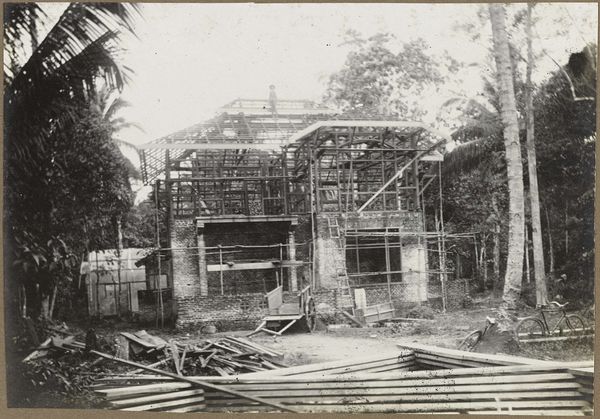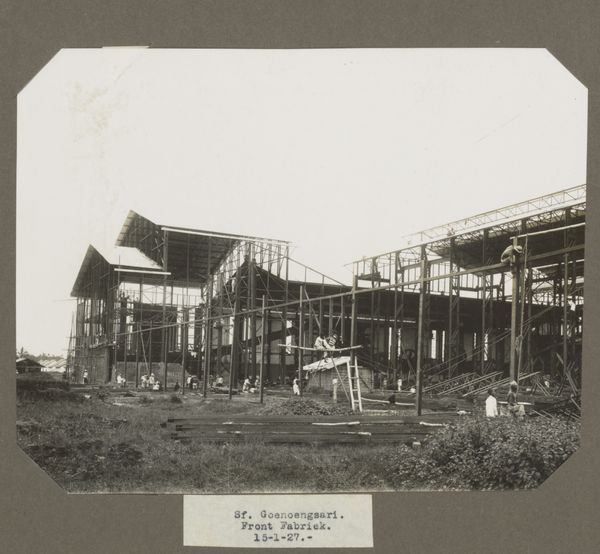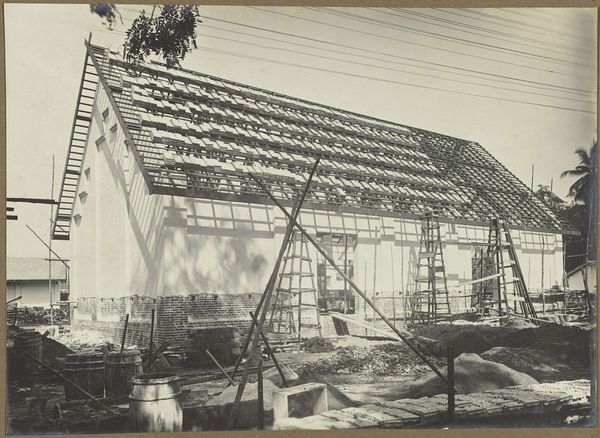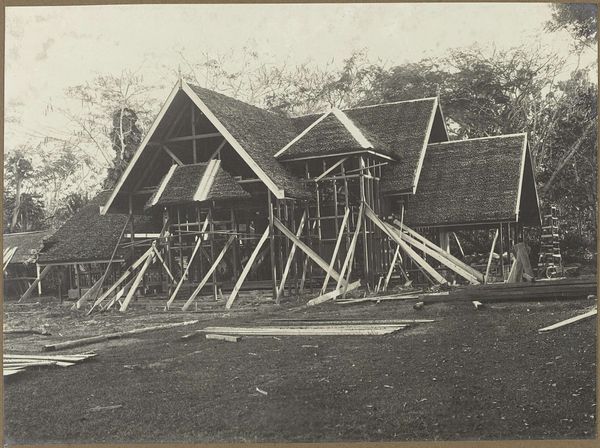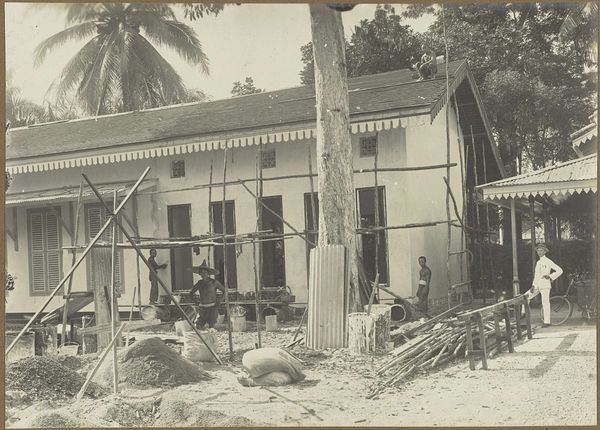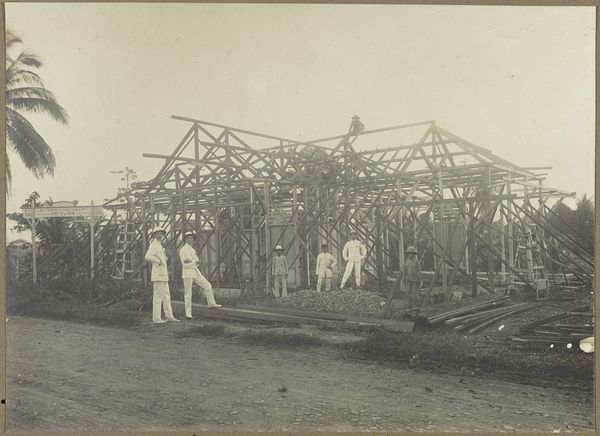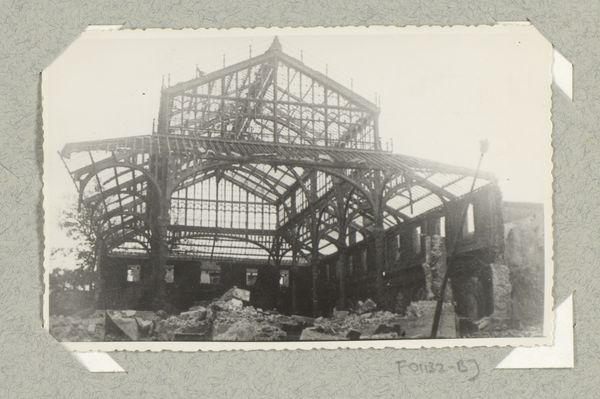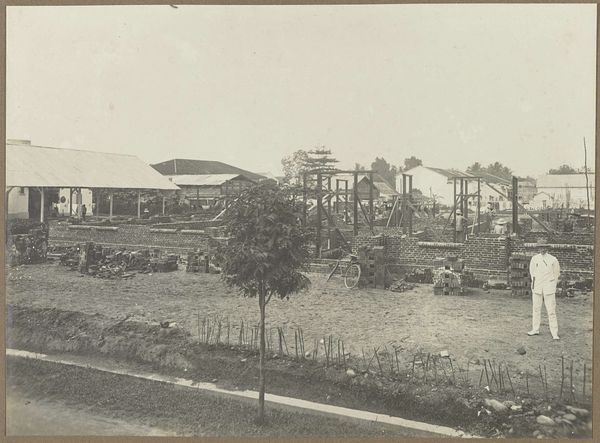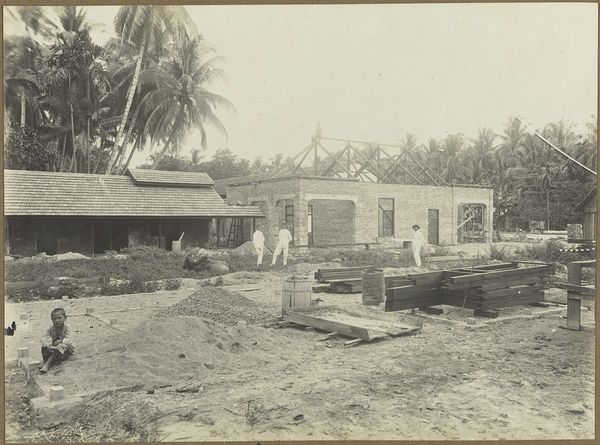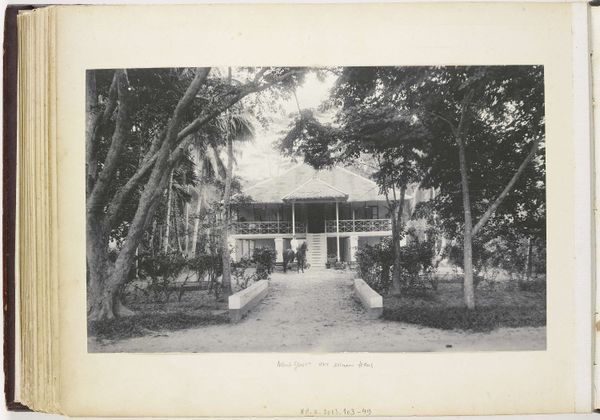
photography, site-specific, architecture
#
landscape
#
photography
#
constructionism
#
site-specific
#
architecture
Dimensions: height 113 mm, width 160 mm
Copyright: Rijks Museum: Open Domain
Curator: What a fascinating image. This photograph, "Grote villa in Simpangampat in aanbouw," whose creator is anonymous, was taken sometime between 1914 and 1919. Editor: My first impression is that it looks like a ruin, almost, even though we know it's under construction. The stark framework juxtaposed with the surrounding greenery is quite striking. Curator: Indeed. I see this skeletal structure as a symbol of ambition and colonial power. The house isn't just a dwelling; it's an assertion, a claim staked on the landscape. It reveals a lot about cultural continuity in colonial spaces. The architecture is undeniably European, planted in the lush tropics. Editor: Right, and it makes me think about the materials—where did they come from? Who assembled this massive timber frame? The photographic print itself provides evidence of a global supply chain, human labor, and the act of extraction that colonialism entailed. It is interesting how the tropical foliage merges into the house under construction and with it, merges two cultures. Curator: That blending you noticed could be viewed psychologically; how the aspirations and culture merge with local nature and building tradition, even unconsciously perhaps. What will the finished villa look like and who will get to live here? Editor: And let’s not forget that photographic process itself, another technological import central to colonial projects of mapping and control. This photograph preserves not only the physical space but a record of these operations. Look at the old villa next door! The size of this next great house dwarfs that building. Curator: Exactly. Photography fixed the project in time, solidifying its place in the cultural imagination. Editor: Considering it’s still uncompleted, this "villa" exists here mostly as a future, potential entity. It has a lot to do with futurity, desire, planning and wealth of an era. The frame embodies these very factors. Curator: I agree; it also evokes memory and aspiration, even of a present forever deferred. What a poignant convergence of symbols and latent narratives embedded in a seemingly simple landscape. Editor: Absolutely. Analyzing it through material practices gives so much to ponder – it is an open structure still speaking to our world today.
Comments
No comments
Be the first to comment and join the conversation on the ultimate creative platform.

